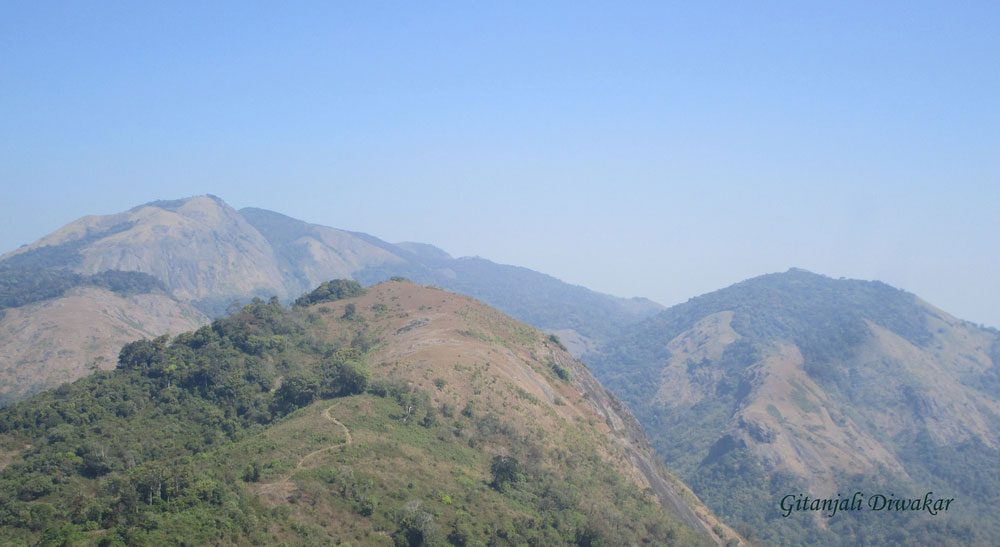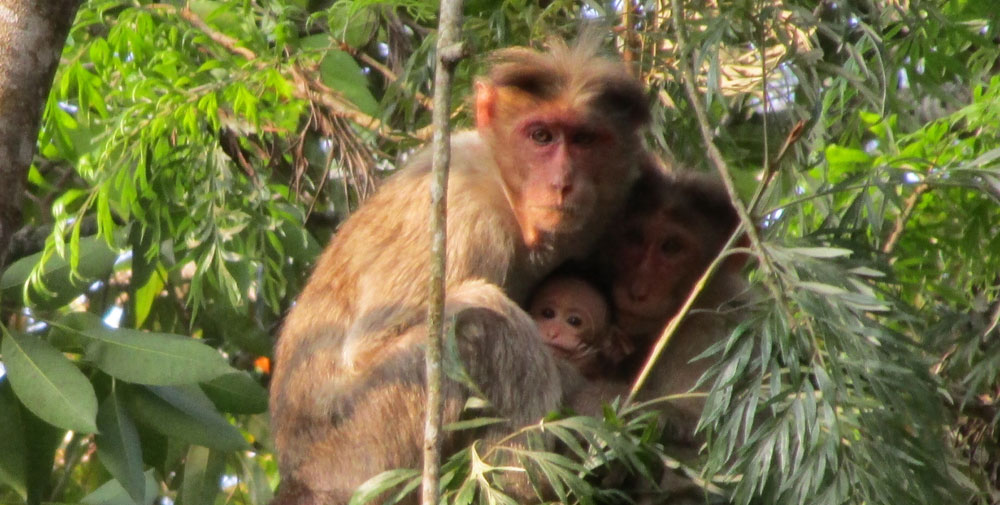Take a peaceful trip to Nelliyampathy's forests, where the hills meet the clouds, the trees tell stories, and each moment feels fresh, quiet, and truly unforgettable.

Published: byGitanjali Diwakar,18 Jan, 2017
Places I explored :
Nelliyampathy A view from Mattu Mala, Nelliyampathy, Palakkad district
A view from Mattu Mala, Nelliyampathy, Palakkad district
It has been over two days. Yet, I can still hear the Great Hornbill calling out, the Sambhar running through the bushes while the sound of the wind replicates that of a waterfall. Indeed, the two-day long camp at one of Kerala 's most scenic locations was more than a mere camp.
January 14, 2017. While the most of India celebrated Makara Sankranti, my trekking buddies and I decided to spend the weekend at Nelliyampathy, situated in Kerala 's Palakkad district.
Nelliyampathy a quick insight
For those of you who wish to experience the ˜wild side of life, ™ this is one place that you must visit. Nelliampathy is home to some of the most unique varieties of flaura and fauna, especially Kerala 's state bird the Great Hornbill.
A camp like none other
 The camp site at Nelliyampathy
The camp site at Nelliyampathy
We set out from Ernakulam at 7.00 am. At approximately 9.00 am, we decided to halt at an Indian Coffee House outlet in Thrissur district for breakfast. Soon after, we decided to proceed towards our destination. The drive, though long, was one of the most exciting moments. With little children telling us stories, jokes and riddles.
The path was chalked out in green, with tea and coffee plantations on either side of the hairpin bends. One would wonder, œWhy visit Assam? This place is as charming if not more? Not mention the joy of experiencing the scent of a pollution-free zone.
It was 11.00 am when we had reached the base of Kesava Para, situated opposite the popular AVT Tea Factory at Nelliyampathy. The climb up the hill was not as challenging as one would expect. Personally, I was surprised at the speed at which the children in the group (especially those below the age of 12) sped past the rest of the crowd to reach the top. The trek led to a tiny forest land, covered with dry leaves and some of the most stunning trees. It was not long before a few members of the group decided to showcase their acrobatic skills and target every tree that they had spotted.
 A view from Mattu Mala
A view from Mattu Mala
After a quick introduction of the participants of the trek, we began to head back to the base for lunch. As we relished a most sumptuous lunch, a family of monkeys had kept us entertained with their many pranks and acts of selfishness. Then again, it was a sight to laugh at.
At approximately 3.30 pm, we had reached our destination. A camp site was allotted to the team by the officers of the Kerala forest department. While a few members of the team had begun to set up the tents for the night, a few of us decided to take a stroll around the area. The peaceful and serene surroundings took our breath away. We also spotted a number of fresh honey combs and a family or black langoors enroute.
An hour before the sunset, the group had headed towards to a river bank for a quick dip in the water. Yes, the water was cold but it was fun. Following the water games, we dried ourselves clean and geared up for a bonfire. Logs were collected by some of the strongest members of the team to prepare a fire. The temperature had begun to dip and some of us wrapped ourselves in jackets as well full-sleeved shirts. With music, dance and drama, the bonfire had become the ˜bond fire, ™ giving us an opportunity to break the ice and get to know each other.
We, then, treated ourselves to some hot soup, chapathi, spicy vegetable curry and chicken curry. It was also amazing to see how each member of the team had volunteered to do their share to make the camp more memorable and stress-free. After a few minutes of chatter, all of us had hit the sack. Our tents became our new home. As we gazed at the moonlit sky through the gaps of our tents, we could only think of the destination and the view that we did hope to see.
 The Malabar Squirrel
The Malabar Squirrel
The cool breeze was powerful in every sense. But it did not scare the elephants (the forest guards claimed), the wild cats, the Sambhar and other creatures that ran about the camp site at 3.30 am in the morning. We were awake at 5.30 am and were all set to witness nature at its best. After completing our morning chores, we had split in different directions to see what was hidden behind the many pockets of the forest. It was sheer good luck that we had spotted a flock of Great Hornbill flying in the sky and a family of spotted deer on our way.
Post breakfast, we packed our lunches and set out to climb up Mattu Mala. The trek was a total of 12 kilometres both ways. The initial section of the route was quite rocky. Soon, we had entered the forests. The dense vegetation around us houses many interesting creatures as well as a few unique plants. As we tried to pierce through the gaps between the trees, we were convinced that the view would only get better. The uphill climb was tedious to a small extend. But ultimate destination had washed away our fatigue almost instantly.
One could see the Parambikkulam Tiger Reserve from the hill top. Our forest guide also told us that the forests and the path that we had come by, has cameras stationed in certain sections. The footage is often used to keep a track of the tiger population in forest range. The breeze was strong yet cool. All of us were tempted to reside in a corner and inhale the fresh air. This spot is ideal for photo shoots!
 Yes, the Nelliyampthy forests belong to them
Yes, the Nelliyampthy forests belong to them
We began to walk downhill and halt under a shade for lunch. Some of us decided to enjoy a quick siesta after the meal while the rest began clearing up the plastic wastes that we had brought. As we headed back to the base, we were also treated to some paysam by a few local residents.
All in all, this trip was an eye opener. Not only did we see the negative impacts of global warming in some of India 's most popular water reservoirs, but we also learnt to appreciate nature for its energy and survival mechanisms.
Take away: It is nature that gave us all that we have and it is nature that can take it away from us too. Respect it.
Quick facts:
Location: Palakkad district, Kerala, India
Distance: 63.7 kilometres from Palakkad
Time taken to travel to the base of the camp: 1 hour (approximately) from Palakkad
5 hours (approximately) from Kochi, Ernakulam
2 hours (approximately) from Coimbatore
Means of transport: You can board a bus up to Palakkad and then consider taking another bus to Nelliyampathy. It would be wiser for you to make arrangements for a vehicle at your disposal. If you are a biker, the route is a biker 's paradise.
Closest railway stations: Coimbatore, Palakkad
Closest airport: Coimbatore International Airport, Coimbatore
Total duration of the trek to Maatu Mala (to and fro the base camp): 5 hours (approximately)
Trekking season: September to February. Avoid trekking in this range during the monsoons as the area will be infested with leeches.